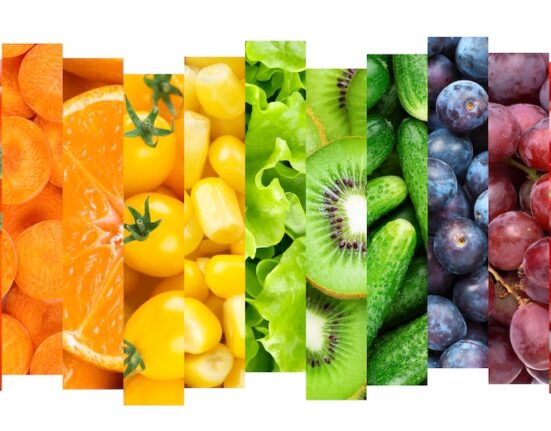The global fruit market has been rocked in the past few years, first with the impact of the Covid-19 pandemic and then in the last 12 months, the dreadful war in Ukraine. There isn’t a grower, packer or exporter/importer in the world that hasn’t been affected by these double events.
This might be as much in the United States, as anywhere. When you are the biggest import market in the world as the U.S. is, the impact of these supply chain shocks tends to be bigger than elsewhere.
One of the key features of U.S. imports is the dominance of a relatively small number of items: avocados, bananas and grapes are the three most popular imported fruits. Collectively they represent around 40% of the total value for all fruit imported into the U.S. A range of soft fruit products is also significant. Most of this fruit is sourced from Central and Latin America. This means that what happens in the U.S. market also has considerable knock-on effects in this part of the world.
Supply Chain Shocks
We know from past work that major supply chain shocks typically happen every two years, sometimes quicker, and so the next one is probably on its way already. Some of the changes seen in the U.S. are unique to this market, but some changes are also seen in other parts of the world. Proof, if it was ever needed, that we live in something of a global village.
Covid-19 had a devastating impact on both consumers in the U.S., as well as the disruption seen in both import and export supply chains. The war in Ukraine has had an impact all around the world, and this includes the U.S., with spiraling input costs and high levels of food inflation, causing stress at both ends of the supply chain.
Imports Still on the Rise
Yet, despite these supply chain shocks, U.S. imports of fresh fruits and vegetables have continued to increase. They have now reached a huge US$ 26 billion per annum. This has grown by some US$9 billion in the past 10 years. This somewhat, maybe surprising, fact reflects a longer pattern of change in the structure of the U.S. fresh produce market. This has been going on for 40 years or more. It can be characterized by a combination of factors that include Mexico now accounting for at least 50% of U.S. produce imports (dominated by tomatoes, bell peppers, soft fruit and avocados), Peru having become a bigger supplier to the U.S. than Chile (supplying huge volumes of asparagus, blueberries and avocados), and Guatemala and Costa Rica emerging as major suppliers of products such as bananas and other exotic fruits.
Canada is still a major supplier of protected crops, such as tomatoes, peppers and cucumbers. Countries such as Vietnam have emerged as suppliers of new tropical products — dragon fruit is a good example.
A Greater Dependence on Imports
The U.S. has now reached a situation that has been building up over an extended period of time. This is because 50% of its total fruit consumption is accounted for by imports and 30% of its vegetables. How has this situation been reached?
Not least, countries of supply in Latin America have invested strongly in their physical infrastructure, better standards of food safety and quality control, transport and post-harvest technology, and have taken full advantage of lower labor costs and beneficial trade agreements. And, in some cases, well-thought-out promotional activity.
At the same time, there has been an increasing issue with the availability and cost of labor in the U.S. Leading production areas such as California, Washington and Florida have all also seen the impact of climate change act as a constraint to growing. The issue of water availability is becoming of increasing concern. These issues have all been accentuated by the supply chain shocks we have seen over the past few years.
The greater availability of fresh produce from an increasingly diverse range of supply chain sources has acted as a major driver for increased per capita consumption in the U.S., but somewhat alarmingly, nine out of 10 consumers do not eat enough fresh produce based on dietary guidelines.
Changing Routes to Market
Supermarkets are, as in many other developed markets around the world, all important at the point of sale. It is well known, however, that in the U.S. as much fresh food is consumed in the away-from-home sector as it is “in home.” The foodservice sector is still struggling to regain lost business during the pandemic, but the online shopping route to market is still set for strong growth at 5% compound annual growth rate (CAGR) over the next few years. Amazon has emerged as a leading player in the U.S. over the past few years — again boosted by the impact of Covid-19.
The sector will be further stimulated by the growth of vegan-type diets (driven largely by the Millennial age group) and increases in healthy eating from the Baby Boomer generation. Consumption of so-called superfoods, such as kiwi, blueberries, pomegranates and organics are also still seeing robust growth.
U.S. Activity Overseas
The involvement of U.S. produce companies and organizations in international supply chains continues at a rapid pace. Dole has merged with Total Produce. Mission Produce has entered the UK and EU markets, which serve as just two examples. Chiquita and Del Monte have long-standing involvements in Central America and Asia. Similar to many other food multinationals around the world, they are eyeing up new opportunities in emerging markets around the world.
For a long time, China has been seen as the potential “jewel in the crown” here. U.S. companies have also historically invested in Latin and Central America production in order to secure a greater availability of supply. The IPMA has had an impressive outreach program in international markets, including the likes of South Africa and R&D institutes, such as UC Davis in California, which have worldwide reputations.
Going Forward?
This year should see the U.S. economy continue to grow in a post-pandemic environment, but the threat of slipping into recession is, at the moment, never too far away. This modest growth will continue to act in favor of the country’s fresh produce sector. The trend toward increased imports in the U.S. is likely to continue. Market niches, such as superfoods, organics and vegan-based plant meals will continue to move toward the mainstream. Online shopping will continue to grow. Produce demand will increasingly be seen to diversify away from the traditional three or four core products, in addition to the sources of supplies.
A Critical International Market
The U.S. will remain the leading fruit import market in the world, by some distance compared to other large markets such as Germany, Russia and China. While the recent supply shocks have impacted on the nature of the sector, this has been a feature of the U.S. market for a much longer period of time. As a result, the country will still be a market of huge importance to other growers and exporters around the world, but especially in Latin and Central America.
Domestic growers will continue to feel the pressure on their industry from a combination of labor and environmental issues. Investment in agri-tech type solutions is going to be part of the way forward for them. The U.S. is well positioned in this respect, with lots of resources in this area, and substantial help from the USDA and its agencies to drive this forward. At the same time, the decision to invest in areas such as robotics is a big one.
A Decade of Change
The next supply chain shock is probably already on the way. And from work we have carried out around the world, we know that people often traditionally look to the U.S. as an indication of what might happen in other parts of the world, a few years later. This whole process of change has been sped up by the impact of Covid-19 and the war in Ukraine. The often-used phrase “we live in interesting times” — has never appeared to be more relevant, and is actually, a huge understatement.
We are living in almost unprecedented times. We are in a decade of fundamental change in many areas of our supply chains in the U.S. and other leading markets. For U.S. produce companies, keeping on top of what is going on, why and where, is a major challenge, but one that should not be ignored.
• John Giles is a divisional director with Promar International, the agri food consulting arm of Genus plc.





